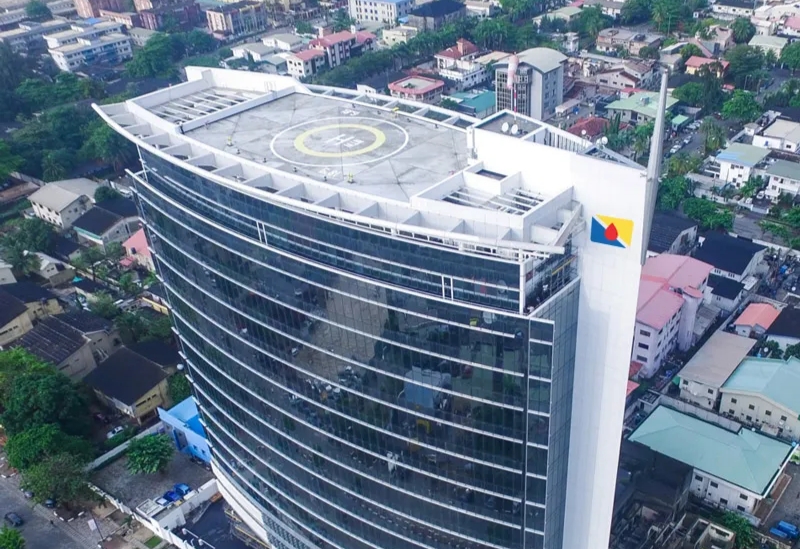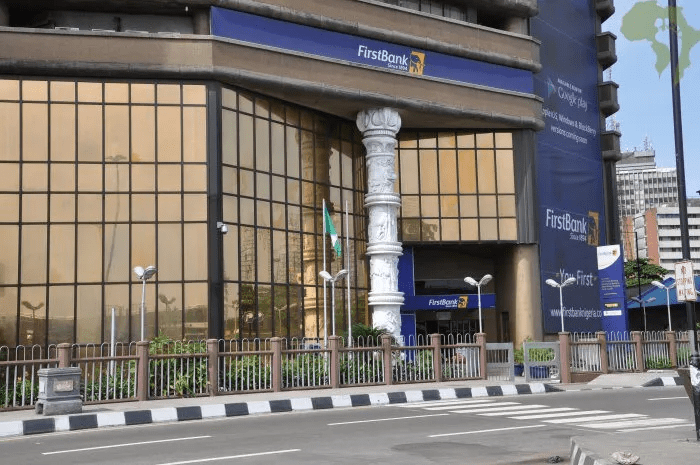By Ken Etete
In writing the history of industrial epochs we often anchor our narrative around the titans who constructed them. In America, the enterprises of men like John D. Rockefeller, Andrew Carnegie, and Cornelius Vanderbilt did not simply respond to capitalism but rewrote its architecture in the late-19th-century. Their names mark not only fortunes, but the industrial systems and supply-chain ecosystems that defined a generation. In the same way, it is now time to place Aliko Dangote in the historical mould as Africa’s era-defining industrialist, as a modern parallel to the Gilded Age’s architects because his integrated, continent-spanning ambition is shaping Africa’s 21st-century industrial revolution.
Dangote as a systemic builder poses as Africa’s industrial springboard and informs my bold thesis that he is to 21st-century Africa what Rockefeller and Carnegie were to 19th-century America. Not simply a business mogul, but a systems-builder: someone erecting the industrial infrastructure for a generation. His empire which is anchored in Nigeria and radiates across Africa, is more than commercial success. It is the infrastructure for an industrial leap: refining crude, building fertiliser factories, closing the import-export gap, and knitting the fragmented value chains that have long hindered African growth.
To grasp why Dangote’s project is epoch-making, one must first recognize the macro-problem that defines the unfinished story of Africa’s industrial lag that it addresses. For decades, Africa has suffered from structural under-industrialization: resources exported unprocessed, value chains fragmented, heavy reliance on imports, and weak linkages between primary commodity extraction and manufacturing. Vast deposits of oil, minerals and agricultural raw materials sat alongside, and in some cases, powered economies that nonetheless imported the finished goods and fuel necessary to operate them.
Nigeria illustrates this paradox perfectly. The country is Africa’s largest oil producer, yet it has been a major importer of refined petroleum products. Nigeria’s refining infrastructure under-performed, state-run plants idled, and fuel queues became recurrent. At the same time, Nigeria’s agricultural sector has struggled because of low fertilizer usage and heavy import dependence. The wider continent endured the same: dependence on raw-material exports, imports of industrial goods and fuel, and limited economies of scale in manufacturing.
This set of dysfunctions depicted by imported fuel, raw‐material exports, weak domestic processing, fragmented value chains is precisely the architecture of a developing economy that hasn’t industrialized. And it is into that gap that Dangote’s ambition enters.
Dangote’s industrial vision is resolutely structural thus it is needful to explore the scale, integration, systems-thinking of his interventions. For example, the flagship Dangote Group refinery at Lekki, Lagos, is designed to process around 650,000 barrels per day of crude oil, making it not only Africa’s largest but one of the largest single-train refineries in the world. As of mid-2025 the facility was running at around 610,000 barrels per day in implied output rates.
Plans are already underway to expand the complex to 1.5 million barrels per day, an unprecedented scale that would place the Lekki refinery among the top five globally and firmly establish Nigeria as the refining hub of West and Central Africa. The refinery’s design anticipates future modular additions and integration with petrochemical and export terminals, creating a self-sustaining industrial ecosystem rather than a single-purpose facility.
Complementing this expansion is Dangote’s deployment of a new fleet of 400 compressed natural gas (CNG) tankers, an environmentally forward initiative that will not only distribute cleaner fuel nationwide but also run on Nigerian-produced gas. This dual purpose both reduces the carbon footprint of domestic logistics and anchors capacity building in Nigeria’s declared “Decade of Gas,” positioning the private sector as a crucial partner in the country’s energy transition strategy.
This means Nigeria can begin to shift from being a fuel-importing country, even as an oil-exporting one, to being self-sufficient and potentially an exporter of refined products. This alone is a major structural transformation.
Beyond the refinery, Dangote built and is operating a fertiliser complex: a urea plant with annual capacity of 3 million metric tonnes in phase 1, established to serve Nigeria’s agricultural needs and the wider continent. This facility is not just about supplying fertilizer but about transforming an entire agriculture-manufacturing linkage. Africa currently imports more than 6 million tonnes of fertiliser annually: Dangote plans to make the continent self-sufficient in fertilizer within 40 months by doubling this capacity.
In essence, you have crude coming in and refined fuel and petrochemicals out; you have fertilizer coming in and enhanced agriculture and industrial inputs out; at the same time pipelines, processing plants, logistics networks get built. This is supply-chain integration at a continental scale. Dangote is redirecting resource flows, building industrial linkages and remapping Africa’s manufacturing geography. In doing so, he is building what one might call Africa’s industrial “backbone”.
What makes Dangote’s story more than just large-scale capital is his entrepreneurial adaptation to Africa’s broken systems. He raises the bar when it comes to entrepreneurial adaptation amidst systemic dysfunctions. Where state infrastructure faltered, refineries idled, pipelines stolen from or vandalized, regulatory regimes weak, Dangote stepped in with a model of private industrial discipline, infrastructure investment, and vertically integrated supply chains. For example, the refinery incorporates a 435 MW power plant to meet its own electricity needs and supply nearby zones. It is built in a special economic zone (Lekki Free Trade Zone), with pipeline imports and logistics linkups, thereby bypassing some of Nigeria’s worn grid and transport infrastructure.
Dangote’s model addresses multiple classic African constraints like currency weakness, logistics bottlenecks, lack of scale by building assets that anticipate them. He did not wait for the entire regulatory or infrastructure environment to be perfect. Instead, he built systems around the dysfunction: private pipelines, onsite power generation, integrated petrochemical units underwriting downstream manufacturing. This is mining the “missing middle” of value chains, moving from commodity export to domestic processing and export of finished goods.
In this sense, Dangote is less commodity merchant and more industrial statesman, creating infrastructure that the continent needs to transition out of mono-commodity economics. He is doing what the Gilded Age industrialists did: building the railroads, the steel mills, the refineries, and the distribution networks. The difference is scale, geography and time: Dangote is doing it in Nigeria for Africa, in the 21st century.
The choice of Nigeria as the launch pad is no accident: with the continent’s largest population (some 200 million plus), and economy, Nigeria offers both the problem and the opportunity qualifying as the indispensable springboard. A successful industrial transformation in Nigeria has continent-wide spillover. Dangote’s refining complex is located at the outskirts of Lagos, one of Africa’s mega-cities and economic hubs. Its impact is already visible: as of 2025, the refinery declared that Nigeria’s decades-long fuel-queue crisis is targeted to end. In a country where fuel imports dominated consumption, this is a signal of industrial shift.
Moreover, Nigeria is central to Africa’s ambition to build internal demand-led manufacturing, move up the value chain, and capture more value in-continent. Dangote’s investment thereby becomes symbolic and material: if Nigeria industrializes, Africa can follow. In effect, Dangote is building the springboard, a launch pad for the continent’s industrial age, by anchoring it in Nigeria.
At this point, one might begin to question whether all of this could signal the emergence of an African Gilded Age with broader implications for the continent. The answer is that by re-mapping Africa’s industrial systems, Dangote is truly ushering in what might be called Africa’s Gilded Age: a period in which domestic processing, infrastructure investment, supply-chain consolidation, and manufacturing leapfrogging become real. That Gilded Age in America was built by tycoons who forged railroads, steel, oil, and shipping. Now in Africa, Dangote’s refining-fertilizer-logistics complex could be the equivalent pivot, not just of Nigeria, but of African industrialization writ large.
He is not alone, nor will he carry the continent alone, but his ambition, scale and systemic reach make him the central figure in this moment. To borrow the intellectual frame invoked by the TV series The Men Who Built America, Dangote is the man who builds Africa’s industrial architecture: the pipelines, the refineries, the fertilizer plants, the petrochemical linkages, the logistics flows, the export corridors.
Of course, this vision is not without risk. Large-scale industrial projects in Africa have often been delayed, under-financed or exposed to regulatory and logistics bottlenecks. Indeed, Dangote’s refinery faced such issues: despite its 650,000 b/d design capacity, domestic crude supply shortfalls meant it had to import oil, and analysts warned of a slow ramp-up. Further, the broader macro-environment remains challenging: fluctuating currency values, infrastructure deficits, trade-logistics constraints and regulatory unpredictability. The fertilizer plant’s expansion, for example, may be impeded by port and transport bottlenecks.
For policymakers and multilateral institutions, Dangote’s activity offers both opportunity and lesson. Opportunity in the sense that private capital can play the systems-building role that public infrastructure has struggled to deliver; lesson in the sense that enabling environments, stable regulation, logistics corridors, supply-chain linkages, human-capital, remain essential. Governments should therefore treat Dangote’s model as a blueprint: aligning industrial-policy instruments, enabling logistics, supporting domestic content, and de-risking large-scale private industrial investment.
In closing, let us return to the narrative framing. The industrialists of the Gilded Age did more than accumulate fortunes; they built systems. They built the rails, the iron, the pipelines, the networks, the distribution channels. Aliko Dangote is doing the same for Africa: building the industrial backbone of a continent at a moment of generational leap.
His refinery and fertilizer factories, his logistics, his export ambitions are not just business ventures. They are structural interventions, rooted in Nigeria, but reaching across Africa. They signal the dawn of Africa’s industrial revolution: renewable domestic capacity, intra-continental trade, value-chain integration, export readiness. In a very real sense, Dangote is the man who is building Africa’s industrial age as a civilization-shaping project
It remains to be seen how fully the promise is realized, how the systems scale, how inclusive the gains. However, the trajectory is unmistakable. If Africa is to have its own industrial epochs, it needs its own steel-and-rail-and-oil builders. Aliko Dangote is that builder for our time.
•Ken Etete is Chief Executive, Century Group




